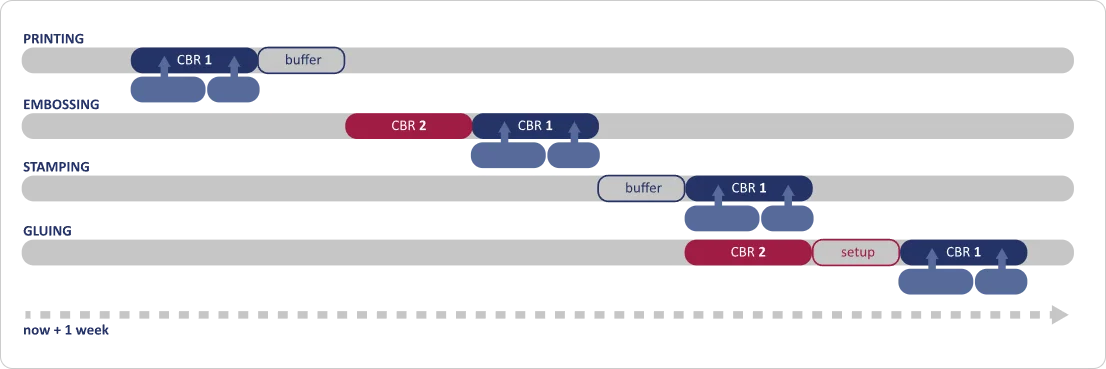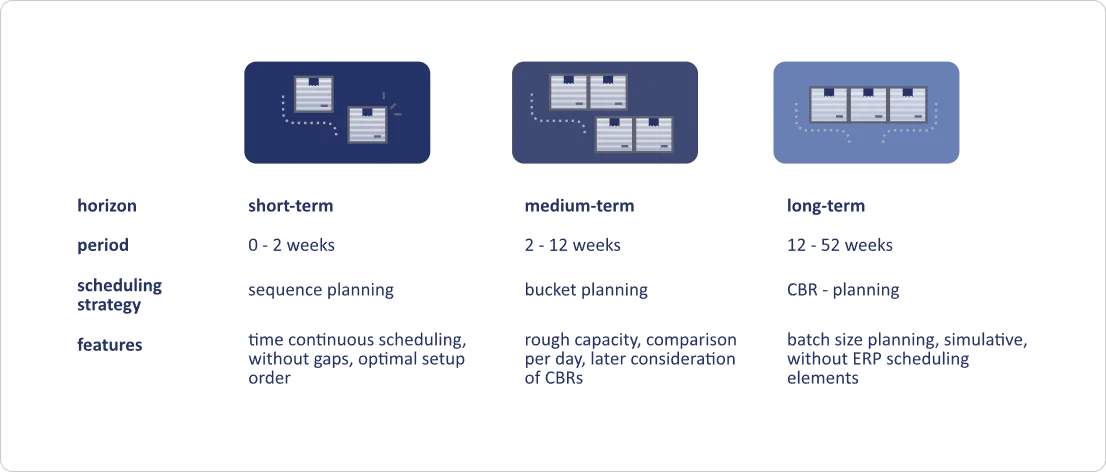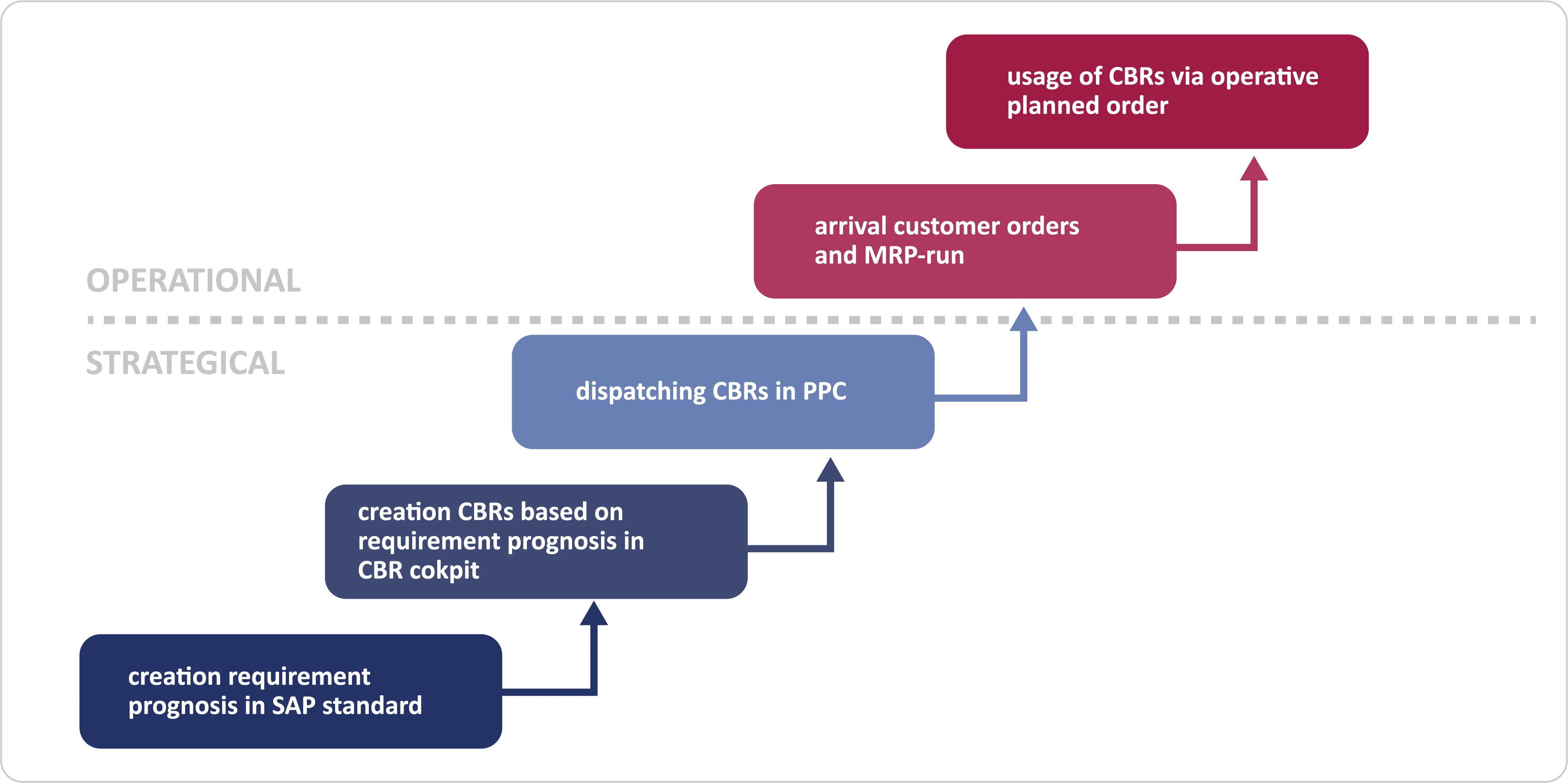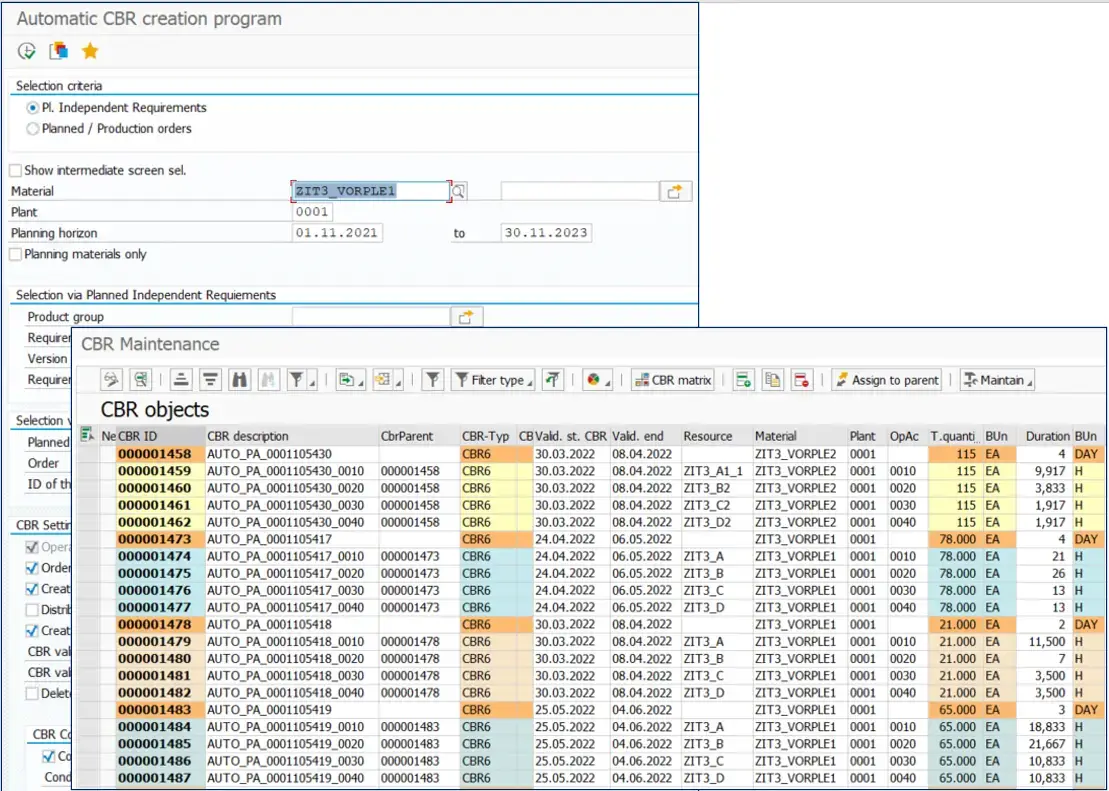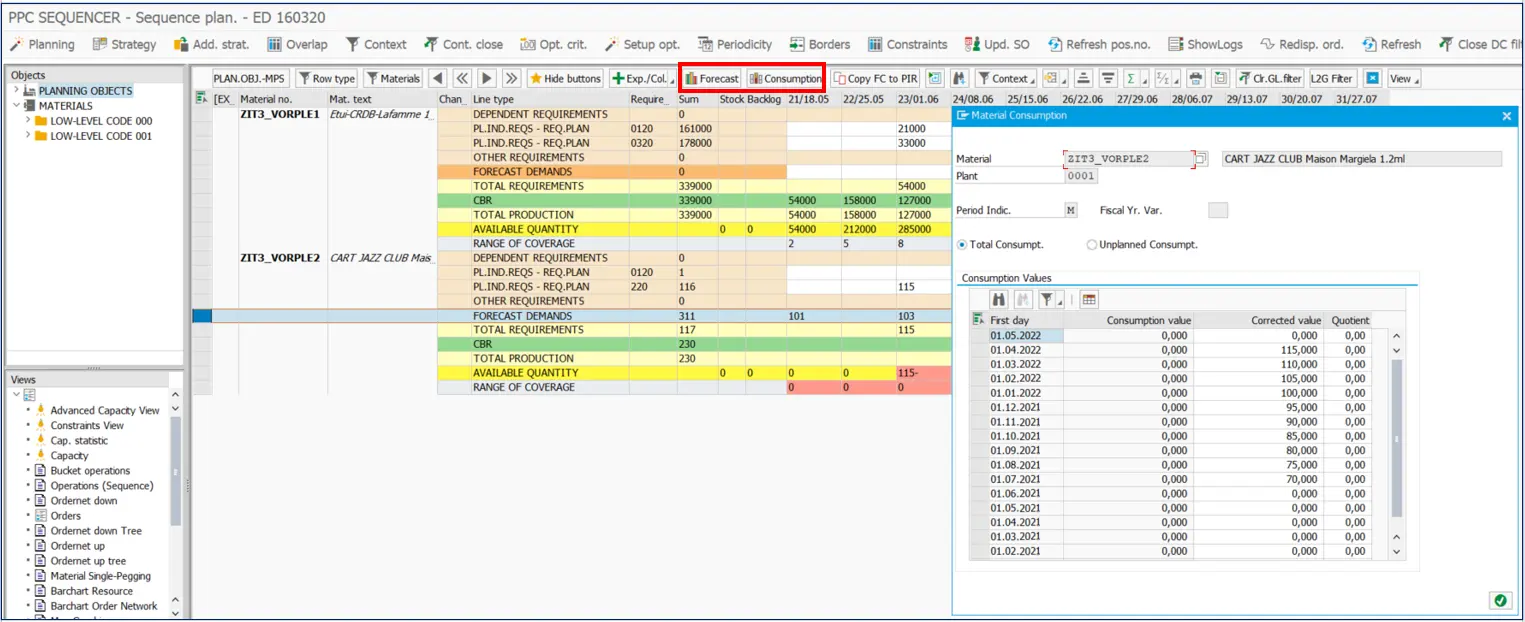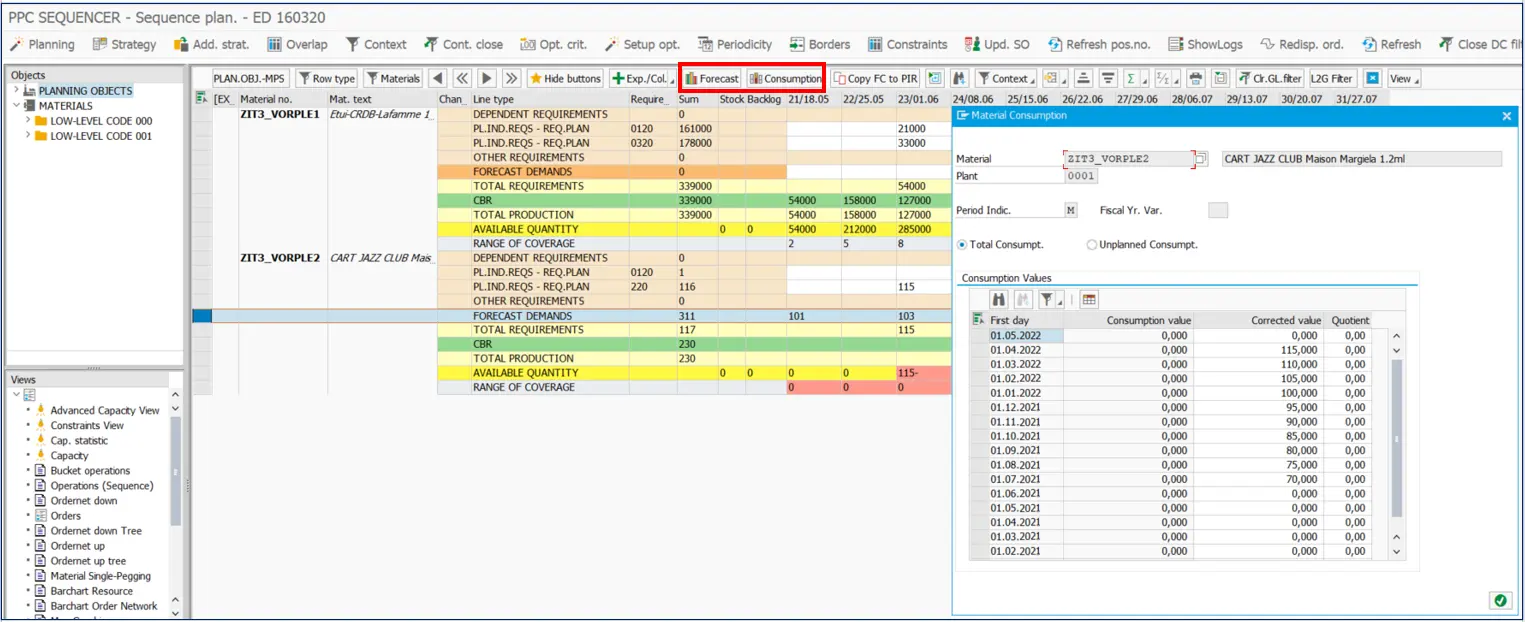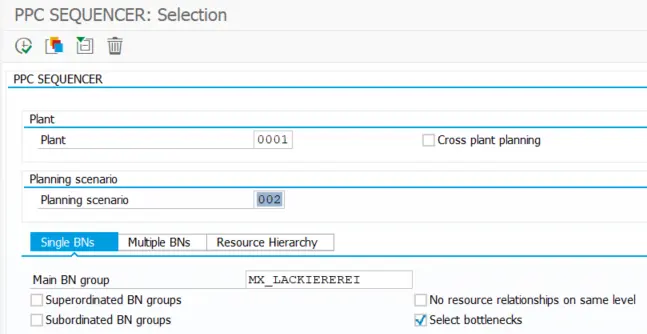General solution approach
Planning requirements medium-/long-term horizon
- Creation and consideration during planning of substitute/planning materials (grouping similar products)
- Basis for planning: forecast data for planning materials (planned independent requirements) transform into capacity requirements
- Generate capacity requirements on forecast basis capacity reservations
- Finite planning of capacity reservations → long-term indicator of whether capacity problems may occur
- Production, set-up and buffer time should be included in planning
- Use of forecast for planning materials as a basic planning.
- "Non-ERP planning elements" for long-term capacity planning, campaign planning and capacity reservation: PPC-specific objects, called "CBRs" (campaigns, blocks, reservations)
- CBRs for production, set-up and buffer times with suitable planning and scheduling strategies (finite, taking borders into account)

